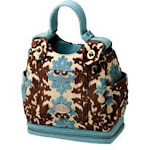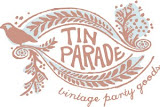With the Holidays sneaking upon us, I remembered that I have a fun story of Holiday tradition to share. Well, this is really my husband, Kiril's, childhood tradition.
Kiril grew up in New Mexico and his Christmases were MAGICAL. Besides the warm adobe homes glowing under blankets of pure white snow, flickering luminaries lining the organic shapes of the mud packed buildings, the hundreds of bond fires warming the streets, the smell of roasting red and green chillis dancing into one's nose, Kiril had kaufmannsladen.

My husband is half German and half Russian. For Christmas, he got kaufmannsladen. For easter, he got Russian home made bread and cheese. Not a bad childhood huh?
In this German kaufmannsladen tradition the adults construct and transform the entire living room into a candy store. In Kiril's house this was serious construction work. They built actual shops, nailed up shelves, provided cash registers, and stocked the shelves full of jars of candy and baskets of marzipan fruits and figurines. Each kid in the family got his or her own store.
The kids were restricted from the living room until construction was completed (by Xmas eve). Kiril told me that he recalls being unable to breathe for days in anticipation.
When the candy stores were unveiled, often with a trainset running through the stores, the children would run wildly into their shops and immediately began taking inventory of their goods. They were in charge of price negotiation, competitive advertising and building their business strategies. They sold to adults, visitors and sometimes to each other. They told me hilarious stories about Kiril's brother (who was a natural entrepreneur) going to his cousins' shops to buy out all their candies, which excited them beyond belief. However they quickly realized that Christmas was no fun without candy. So then Kiril's brother sold the candies back to them for twice what he had paid.
When the candy stores were unveiled, often with a trainset running through the stores, the children would run wildly into their shops and immediately began taking inventory of their goods. They were in charge of price negotiation, competitive advertising and building their business strategies. They sold to adults, visitors and sometimes to each other. They told me hilarious stories about Kiril's brother (who was a natural entrepreneur) going to his cousins' shops to buy out all their candies, which excited them beyond belief. However they quickly realized that Christmas was no fun without candy. So then Kiril's brother sold the candies back to them for twice what he had paid.
Now every Christmas we return to Santa Fe, NM for a little magic. We plan on sharing this tradition with Mila when she gets just a little older.
Unfortunately we can't find any photos of Kiril's candy store right now. However I was able to find a couple of cute examples of homemade kaufmannsladen online.


























2 comments:
What a fantastic and wonderful tradition! I am of German/Danish ancestry and I had never heard of this and wish I had known of it when my children were youngsters! Or when I was a youngster, for that matter! :<) It does sound like your husband had a wonderful childhood!
Barbara Diane
Hi there, greetings from Germany! Many kids in Germany have a kaufladen (which is the short form of kaufmannsladen; you might check the Google image search for kaufladen), but it's not really a typical Christmas tradition. Because if you get a kaufladen (often as a birthday present), you keep it, and there's no need to re-build it every Christmas. Just the candy aspect is clever because usually you don't have "real goods" in your kaufladen but miniature food and goods. If you click here, you can see how much stuff you can buy for kaufläden.
Frohe Weihnachten!
Anke
Post a Comment